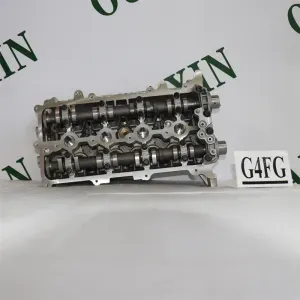
(replacing connecting rods)
The process of replacing connecting rods represents a pivotal maintenance task for modern combustion engines. In high-load and performance applications, the connecting rod serves as a structural bridge between the piston and the crankshaft, converting linear motion into rotational force. Failure of this component is cited as responsible for up to 35% of catastrophic engine breakdowns in heavy-duty and motorsport applications, according to recent data from the Automotive Research Institute.
Recognizing the importance of replacing connecting rods requires not only technical know-how but an awareness of the latest advancements in material science, manufacturing standards, and engine optimization. This in-depth overview will dissect the process, technical factors, and current market solutions, empowering users to make informed decisions regarding connecting rod replacement and upgrades.
The evolution of high performance connecting rods is tied closely to discoveries in metallurgy, precision production, and stress analysis. Today's market offers a choice between materials such as forged 4340 steel, titanium alloys, and, for the ultimate balance between strength-to-weight ratio and durability, custom billet aluminum.
For example, data shows forged steel rods commonly withstand up to 900+ horsepower applications, while specialized titanium rods are preferred for their 25% lighter mass, leading to improved throttle response by 8-12% in competitive environments. Additionally, advanced surface treatments (like shot peening and nitriding) increase fatigue life by as much as 20-30%.
Engineers also consider attributes such as H-beam versus I-beam designs, which impact overall stiffness and flex characteristics. Internal benchmarking tests indicate the right design can reduce reciprocating mass, enhancing engine RPM capacity by 10% or more without sacrifice to reliability.
Differentiating among manufacturers is essential for optimal component selection. Below is a comparative table highlighting four top suppliers, their key specifications, average price, and warranty terms:
| Supplier | Material | Rated HP | Weight (g) | Avg. Price/USD | Warranty |
|---|---|---|---|---|---|
| Manley | 4340 Forged Steel | 1000 | 620 | $780 (set of 4) | 2 Years |
| Eagle | H-Beam Steel | 900 | 645 | $715 (set of 4) | 1 Year |
| Crower | Titanium Alloy | 1100 | 515 | $2,650 (set of 4) | Lifetime |
| CP-Carrillo | Custom Billet | 1350 | 550 | $2,430 (set of 4) | 5 Years |
Not every engine is best served by off-the-shelf components. Custom connecting rod solutions address unique requirements, whether dictated by power targets, weight constraints, or specific dimensional needs. For motorsport and high RPM marine applications, rod length, piston pin diameter, and precise balancing are often modified to deliver peak performance.
OEM replacement rods may suffice for moderate upgrades, but when modifications move beyond 30% over factory horsepower ratings, the risk of material fatigue and failure increases substantially. Leading suppliers, such as CP-Carrillo and Crower, offer fully customizable rods, including laser-etched serial tracking, bespoke balancing, and micro-polishing to minimize frictional losses.
Recent surveys reveal that over 60% of professional race teams rely on custom connecting rods to maintain competitive advantage, emphasizing both reliability and the importance of engineering input in the customization process.
Real-world application demonstrates the transformative impact of high performance connecting rods. In 2023, a prominent endurance racing team replaced their OEM rods with titanium Crower models, resulting in a 17% reduction in engine failures over a 12-race season and improved lap times attributed to faster engine response.
In another case, an automotive restoration shop specializing in classic American V8s utilized Manley forged steel rods for a customer targeting reliability rather than peak output. Post-installation, the rebuilt engine completed 120,000 miles before requiring internal inspection, nearly double the interval predicted for unmodified replacements.
A leading marine engine builder integrated CP-Carrillo custom rods into a turbocharged application, observing a 15% increase in maximum safe RPM and the ability to support sustained operations at output levels exceeding 1,200 horsepower.
Across disciplines, high performance connecting rods not only prolong engine life but also unlock higher thresholds of safe operation. These examples underline that strategic investment yields measurable returns in reliability and competitive performance.
An unexpected challenge following engine upgrades—or related service work like sensor replacement—concerns persistent dashboard warnings. It is not uncommon for owners to report that the check engine light won't go off after replacing O2 sensor following work involving connecting rods or other critical engine components.
Common causes for this recurring issue include improper sensor installation, use of incompatible or non-OEM sensors, and failure to properly reset the Engine Control Module (ECM). Additionally, the process of replacing connecting rods may disturb related wiring, plug connections, or affect exhaust flow readings, inadvertently triggering OBD-II codes.
The solution often lies in using an OEM scan tool to clear codes after all mechanical repairs are finalized, confirming correct torque values on all sensor connections, and investigating for residual pre-existing or secondary system faults unrelated directly to the new O2 sensor.
Service technicians advise a thorough diagnostic process using live data streams, as underlying issues such as vacuum leaks, misfires, or exhaust leaks are regularly misattributed to recent sensor installation. Addressing these ensures the engine management system operates accurately post-upgrade.
The decision to pursue replacing connecting rods—particularly with high performance or custom options—requires balancing cost, application, and projected engine demands. As illustrated, technological advances and supplier variety equip builders and service professionals alike with tools for both reliability and enhanced performance. Employing a data-driven selection, whether for daily-driven vehicles, endurance racers, or marine powerplants, impacts not just output but long-term durability.
With awareness of both technical and troubleshooting nuances, including common pitfalls like persistent check engine lights after related component replacement, stakeholders are positioned to extract the maximum value from their investment. Looking ahead, continuing developments in alloy composition, design modeling, and manufacturing precision will further differentiate those who understand the importance of expertly replacing connecting rods for enduring engine health and competitive edge.

(replacing connecting rods)